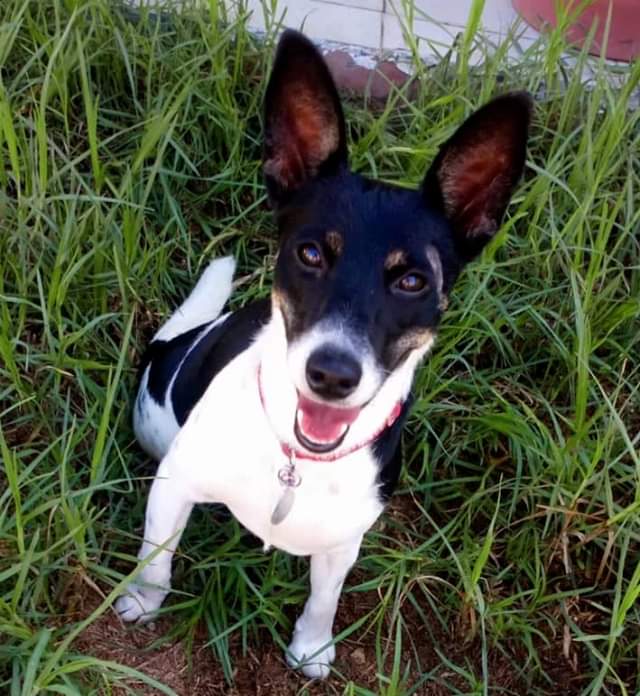Laura – The Paralysed Dog
Laura (former Lara) is a small girl, just under one year and she had a family when disaster struck: She was hit by a car and taken to the vet. The diagnosis: her spine is damaged. She is paralysed!
This means life in a doggie wheel chair and doggie diapers.

But her owner had children and worked very long hours and could not have an animal with special needs.
Laura would be put down the next day.
Elisabeth asked if she could make a plea to her audience, maybe someone would adopt her. It was a race against time but in 24 hours a foster was found.
It was very difficult to find a foster because people don’t know how to deal with a paralysed dog and the “cleaning” of the dog seemed complicated.
The owner is very happy that Laura didn ‘t have to be put down!

So, how do deal with a paralysed dog?
First, all dogs are different, depending on the damage done.
Now, this is about Laura.
Her foster moms tell:
Each disabled dog has different needs and although Laura is paralysed there is less to do for her than others. The advice of a vet should be sought in the first instance. The estimated EXTRA care time for a hind-leg paralysed dog of this size is approxiamtely 30 minutes a day.
The main thing is to empty her bladder for her as this she cannot do on her own.
Laura has semi-voluntary bowel movement. She also has involuntary urine loss throughout the day, but this can be managed with a diaper. She needs to have her bladder emptied MANUALLY (see relevant video below) twice a day, one first thing in the morning and then in the evening, in order to avoid renal tract or kidney infections.
Next is the dressing which has to be put on her legs. Laura had two foster moms with different floors. The ideal floor for her is with a smooth surface e.g TILES and GRASS. In that case the dressings(vetflex) on her legs only need change once or twice a week. She can be without the wheels on a smooth patio or grassy garden.
Otherwise a new dressing on her back legs and feet might be necessary every morning; so that they wouldn’t get sore and infected. Also a drag bag which is secured around her front body might be good investment. It has extra padding for her legs.
Laura mentally did not realise she was not able to do certain things and did not let her new found physical limitations prevent her from enjoying herself.
Later on in life she will need supplements to keep her joints healthy. e.g glucosamine+HA+collagen.
She can benefit from physiotherapy at home to slow down the natural back leg muscle atrophy process.
However the main thing when caring for a disabled animal is to develop a routine and then it is easy. There are so many aids to help an animal lead as normal a life as possible. A dog can have so much fun with back wheels. In summary it is not so hard having a dog like this.
And doesn’t a dog deserve the chances as a human in the same situation?
A paralysed dog’s love for its owner does not change because it cannot walk ❤

On YouTube you will find a lot of tips for dealing with disabled dogs f.e.
